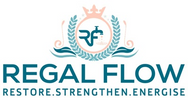
How to Choose the Right Countertop Water Dispenser for Your Home
Tired of battling bulky water bottles or waiting ages for the kettle? A countertop water dispenser is the ultimate hydration hack! Short answer? Pick one that fits your space, filters well, and won’t send your energy bill soaring. Keep reading for a fun, no-fuss guide on How to Choose the Right Countertop Water Dispenser!
Introduction: Aligning Your Needs with the Right Dispenser
Ever felt like your kitchen is missing something? You’ve got the kettle, the fridge, and maybe even a fancy coffee machine—but what about instant access to clean, filtered water at the perfect temperature?
A countertop water dispenser can be a game-changer, but with so many options, how do you pick the right one? Short answer: Choose one that matches your water habits, fits your space, and doesn’t drain your wallet with high energy costs. Keep reading to find out how to make the perfect choice!
Understanding Your Water Usage and Needs
Before diving into brands and features, think about how much water your household actually drinks. Are you a tea enthusiast who needs boiling water on demand? Do you have a large family that constantly refills bottles?
For light users, a small dispenser with basic filtration may do. But if you’re after purified water for cooking, drinking, and making hot drinks, a larger unit with advanced filtration is worth considering.
Setting a Realistic Budget
Water dispensers come in all price ranges. You can get a simple unit for £50, while high-end models with multi-stage filtration and smart features can cost upwards of £300.
Think beyond the upfront price. Filter replacements, energy consumption, and maintenance costs all add up. A slightly pricier model with long-lasting filters may save you more in the long run.
Water Quality and Filtration Requirements
Assessing Your Local Water Quality
Tap water quality varies across the UK. Some areas have hard water, leading to limescale build-up, while others might have a chlorine taste.
Check your local water report or do a simple taste test. If your tap water is already decent, a basic carbon filter may suffice. If you’re dealing with heavy metals or bacteria concerns, a more advanced system is needed.
Choosing the Right Filtration System
Types of Filters (Activated Carbon, Reverse Osmosis, etc.)
- Activated Carbon Filters – Great for removing chlorine and improving taste.
- Reverse Osmosis (RO) – Best for removing contaminants but requires more maintenance.
- UV Purification – Eliminates bacteria and viruses, ideal for those worried about waterborne germs.
Filter Replacement and Maintenance
Filters need changing every 3 to 6 months, depending on the model and usage. Some dispensers have LED indicators to remind you when it’s time for a new one, saving you from drinking unfiltered water unknowingly.
Temperature Preferences and Functionality
Hot and Cold Water Options
Love instant tea or a chilled glass of water? Many dispensers offer both hot and cold water settings, cutting down the need for kettles and ice trays.
Temperature Control and Consistency
Higher-end models let you choose exact temperatures, which is great if you prefer warm water for digestion or precisely heated water for brewing coffee.
Room Temperature Dispensing
Some people prefer water that’s not too hot or cold. If that’s you, look for models that also dispense room-temperature water for ultimate flexibility.
Capacity and Size Considerations
Tank Capacity and Dispensing Rate
A 3-litre tank is ideal for singles or couples, while a 10-litre model suits families. Fast-dispensing units ensure you’re not waiting ages for a refill.
Physical Dimensions and Countertop Space
Measure your countertop before buying! Some models are sleek and compact, while others take up significant space. A slim dispenser under 30cm wide is ideal for small kitchens.
Dispensing Mechanism and User Interface
Push-Button vs. Lever Dispensing
Push-button models are modern and easy to use. Levers can feel sturdier but might require two hands to operate.
Child Safety Features
If you’ve got little ones, look for child-lock mechanisms on hot water dispensers to prevent accidental burns.
Drip Trays and Spill Prevention
Drip trays catch excess water, preventing countertop mess. Some premium models even come with self-cleaning features to avoid bacteria build-up.
Energy Efficiency and Operating Costs
Energy Star Ratings
Look for Energy Star-rated models that use less electricity. These units provide hot and cold water without running up your bill.
Power Consumption and Standby Modes
Some dispensers have standby or sleep modes to save energy when not in use. Others use thermo-electric cooling, which consumes less power than compressor-based systems.
Material and Durability
BPA-Free Materials
Ensure your dispenser is BPA-free to avoid harmful chemicals leaching into your water.
Build Quality and Longevity
Stainless steel interiors last longer than plastic. Investing in a sturdy model means fewer breakdowns and replacements.
Installation and Maintenance Ease
Installation Requirements (Plumbing, Bottled)
- Bottled Dispensers – Just plug and go, no plumbing required.
- Plumbed-In Models – Require a water line but offer unlimited filtered water.
Cleaning and Sanitisation Procedures
Regular cleaning prevents bacteria build-up. Some units come with self-cleaning UV technology to kill germs automatically.
Additional Features and Considerations
UV Purification
UV light kills bacteria and viruses, perfect for those who want extra peace of mind.
Leak Detection and Alarms
Some high-tech models have leak sensors to prevent spills and water damage.
Smart Features and Connectivity
WiFi-enabled dispensers can notify you when the filter needs changing or when water levels are low.
Brand Reputation and Warranty
Researching Reputable Brands
Stick to trusted brands like Brita, Smeg, and Aqua Optima. Reviews on UK sites like Which? can help you compare real user experiences.
Checking Warranty and Customer Support
Most reputable brands offer a 12 to 24-month warranty, giving you peace of mind. Check if customer support is responsive in case you need assistance.
Addressing Common Concerns
Water Taste and Odour
A good filtration system removes chlorine taste. If your water still tastes off, a charcoal filter may help.
Maintenance Costs
Factor in filter replacements and energy costs. Some high-end models use less power and have longer-lasting filters, making them cheaper to maintain in the long run.
Conclusion: Selecting the Ideal Countertop Water Dispenser for Your Needs
A countertop water dispenser is a small change that can make a big difference in your daily routine. Whether you need hot water on demand, chilled hydration, or pure filtered water, there’s a perfect model for you.
Consider your budget, space, water quality, and energy efficiency before buying. The best dispenser isn’t just about features—it’s the one that fits seamlessly into your lifestyle.
Now, the only question left is—which one will you choose?


Leave a comment